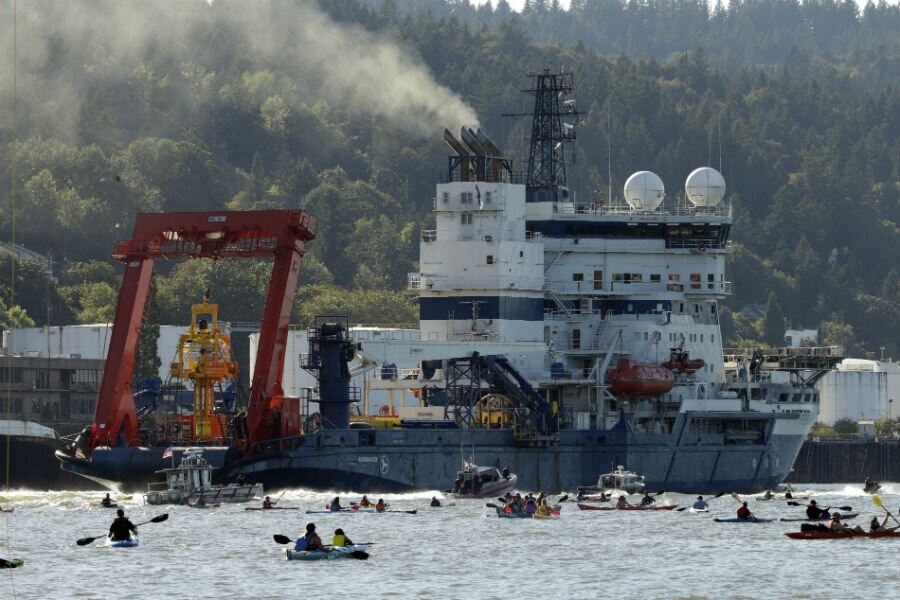Shell in the Arctic: Please, Mr. Obama, may we drill some more?
Loading...
Royal Dutch Shell informed US officials on Tuesday that it is ready to drill deep for oil in the Arctic.
The request for the required permits comes three years after Shell made a disastrous foray to the same area, when, caught unprepared for the harsh conditions, Shell had to rescue 18 workers and tow two rigs to safety. At the time, the US Interior Department criticized Shell for poorly supervising its contractors and revoked Shell's permitting until the problems had been fixed.
In July, Obama's Interior Department gave Shell the nod to return to drilling leases the company first obtained during the Bush administration.
Shell's Polar Pioneer rig started drilling on July 30, but new US safety standards have so far prevented the company from drilling deep enough to hit oil.
Shell has been waiting on the Fennica, a Finnish ice-breaker that carries spill response gear on board, including a capping stack that can be lowered onto a leaking oil well in the event of a blowout. Arctic operating standards, rewritten in the wake of the Deepwater Horizon disaster, require this device to be available within 24 hours, according to The Guardian.
The Fennica arrived in the Chukchi Sea on Tuesday after a 2,300 mile trek north from Portland, where engineers had repaired a gash in its hull first discovered in July.
Now that "Fennica is in the Chukchi Sea," said a Shell spokeswoman, "drilling continues, and we have requested the permit to drill deeper in this exploration well."
Company geologists believe that beneath Burger J – a drilling site 70 miles offshore and 800 miles from Shell's Anchorage command center – they will find up to 15 billion barrels of oil, reports Bloomberg. An additional 11 billion barrels are thought to be buried eastward, under the Beaufort Sea. Taken together, Arctic waters cover about 13 percent of the world’s undiscovered oil, according to government estimates.
A second Shell rig, the Noble Discoverer, is also ready to begin work, but federal regulations prohibit simultaneous drilling, citing disturbance to local walrus populations. The government requires a second rig nearby in order to sink an emergency relief well to divert pressure from a blowout – a standard Shell has lobbied hard to water down, according to The Guardian.
Shell claims that the Arctic's energy resources are vitally important, despite tanking oil prices and oil's acknowledged role in man-made climate change, which Shell publicly accepted in 1997.
For several years the company has endorsed a carbon tax, even as it has pushed against preventative measures meant to make drilling safer and worked to relax permitting regulations.
A report by the National Research Council from last year finds that current infrastructure resources in the Arctic – including personnel, equipment, transportation, communication, navigation, and safety resources – are inadequate, and would pose a "significant liability" in the event of a spill.
Shell plans to drill until late September, Bloomberg reports, at which point the vessels will move south to sit out the winter months. Shell will have to come back for 15 summers before “first oil” can flow through as-yet-unbuilt seafloor and overland pipelines to the Trans-Alaska Pipeline.






